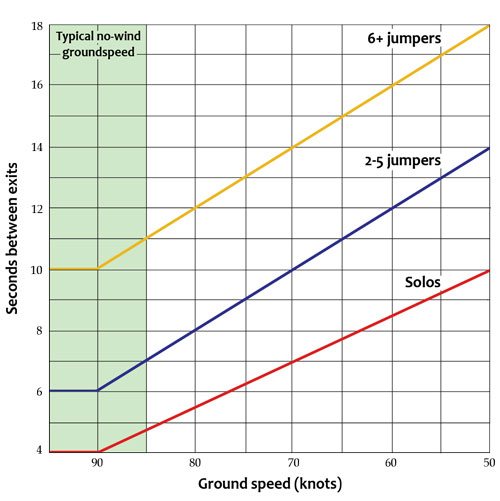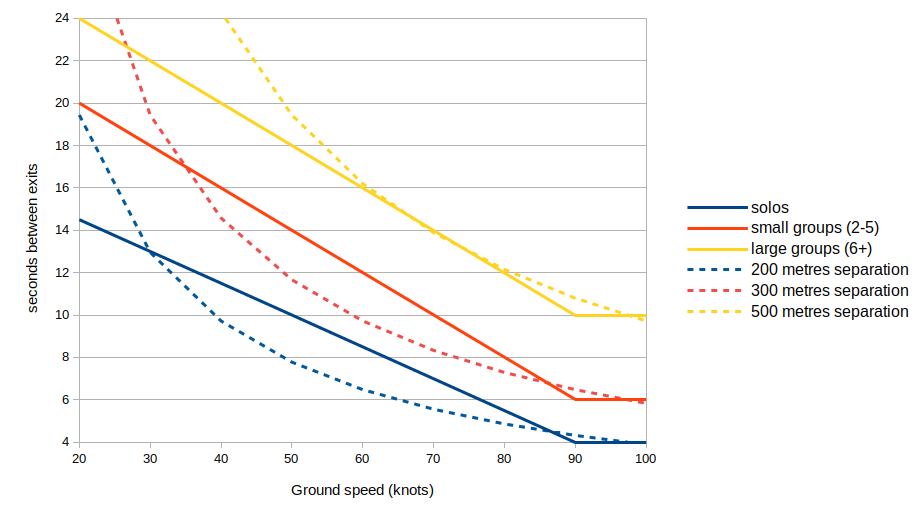Exit Separation
Exit separation is an important factor in skydiving safety. Skydivers know this, but their need for exit separation is counterbalanced by their fear of exiting too deep into the jump run and not making it back to the DZ.
But now, the X2 adds another dimension of awareness. Not only will it tell you how far you are from the landing area, but we’re working on adding some features to increase safety by maintaining good exit separation.
What’s the ideal exit separation?
Skydive Spaceland Houston has written an excellent article detailing this (https://houston.skydivespaceland.com/exit-separation-skydiving-groups/) and they have identified 2 factors that affect the ideal exit separation time:
- group size, and
- ground speed at jump run.
They show this on their graph:

Exit separation according to Skydive Spaceland Houston (credit: Skydive Spaceland Houston)
However, we soon realised that this graph was highly simplified. In order to determine the ideal exit separation from the graph, we replotted it with the X axis showing increasing ground speed. We then rearranged the equation for distance from:
distance = velocity x time (1)
To:
distance/velocity = time (2)
This is not a line, but a curve. We then tried fitting various horizontal separations to this and discovered that roughly 200, 300 and 500 metres worked best.

So it seems like Skydive Spaceland Houston tries to maintain a horizontal separation of approximately 200 metres between solo jumpers, 300 metres between small groups, and 500 metres between large groups.
So how can the X2 help?
Skydivers have a lot to pay attention to and don’t have time to do complex calculations on jump run. Having easy-to-remember tables or graphs is a lot better than calculating points on a hyperbolic curve on jump run. However, as you can notice from the Skydive Spaceland graphs, in some situations, the horizontal separation will be less, in some others, the separation is more than the “no-wind” ground speed separation. The only way to maintain constant horizontal exit separation is if the exit separation corresponded to points in the curves, rather than lines.
Now, what if skydivers had access to a powerful flight computer with a GPS that did this automatically? This means that they can maintain the required horizontal separation, but be less likely to end up in an excessively deep spot!
All that’s needed is for the user to enter their desired exit separation distance in the app or device, and the X2 will then do the calculation and show the required exit separation in plane mode. We’re now working on this feature for the X2, so watch this space! 😉
*Calculation assumptions – if
- each group experiences the same drift downwind (or if not, higher-drift groups exit first as is done in most dropzones)
- each group deploys at the same altitude
- no significant tracking
**1 knot = 0.514444 metres per second
Then, the groups will be separated by at least the amount calculated (200, 300 and 500 metres).
**Other articles recommend larger separations:
- 305 metres (1000 feet) minimum for *any* group
- 457 metres (1500 feet) minimum (USPA SIM)
